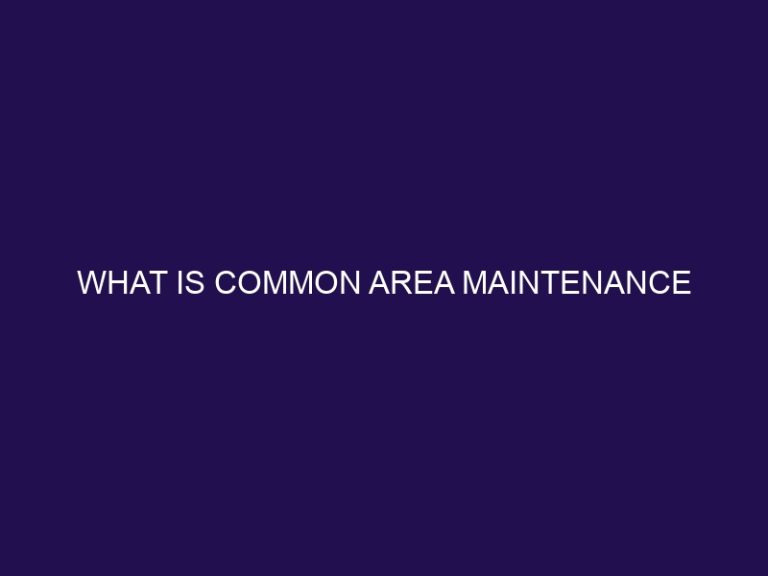What is a Duplex
Duplex housing has gained popularity as an attractive housing option for many individuals and families. Understanding the concept of a duplex is essential to grasp its unique features and benefits. So, let’s delve into the world of duplex housing.
A duplex refers to a residential building that is divided into two separate units, each functioning as an individual living space. These units are typically stacked on top of each other or side by side and share a common wall or floor/ceiling. Each unit in a duplex usually has its own entrance, kitchen, bathroom, and bedrooms, offering a sense of privacy and independence.
There are different types of duplexes, such as side-by-side duplexes, where the units are adjacent to each other horizontally, and up-and-down duplexes, where the units are stacked vertically. Duplexes differ from other housing structures like apartments or single-family homes because of their unique layout and shared space.
Living in a duplex offers several advantages. Firstly, affordability and cost-sharing are major benefits, as owning or renting a duplex allows individuals to split expenses with the other unit, making it a more cost-effective living arrangement. Secondly, duplex living provides a balance between privacy and independence, as residents have their own separate living spaces. Lastly, living in a duplex fosters a sense of community and shared space, enabling interactions and connections with neighbors.
Before choosing a duplex, there are some important factors to consider. Location plays a crucial role, as it determines the accessibility to amenities and the neighborhood’s overall environment. Size and layout preferences must be taken into account to ensure the duplex fits individual needs. Understanding maintenance responsibilities and legal/financial considerations are vital for a smooth living experience.
There are common misconceptions about duplexes, such as assuming they are the same as townhouses or assuming the rental or purchase process is the same as for single-family homes. By debunking these misconceptions, individuals can make informed decisions regarding duplex living.
For those interested in renting or buying a duplex, specific steps need to be followed. These include finding available duplexes for rent or sale, evaluating the condition of the property, and negotiating rental agreements or purchases to ensure a fair deal.
Living in a duplex comes with its own set of tips to make the experience more enjoyable. It is important to establish effective communication and boundaries with neighbors to maintain a harmonious relationship. Maintaining the property and respecting shared spaces is crucial to ensure a pleasant living environment. Lastly, knowing how to address maintenance and repair issues promptly is essential for maintaining the quality of the living space.
By understanding the concept of duplex housing, its advantages, factors to consider, misconceptions, and practical tips, individuals can make well-informed decisions when it comes to choosing, renting, or buying a duplex.
Understanding the Concept of Duplex
When considering different real estate options, it is essential to understand the concept of duplex housing. A duplex is a type of house that consists of two separate living units within the same structure. Each unit typically has its own entrance, kitchen, bathroom, and living space. Understanding the concept of duplex housing is important because it offers benefits such as shared expenses for maintenance and utilities, potential rental income, and the opportunity for extended families to live close together. Duplexes are particularly popular in urban areas where space is limited. It is interesting to note that the concept of duplex housing dates back to ancient civilizations, such as the Roman duplex apartments found in Pompeii.
What is the Definition of a Duplex?
A duplex is a type of housing structure that offers the convenience of separate living spaces while sharing common walls or floors. It consists of two separate living units within a single building, each designed as a separate residence with its own entrance. The term “duplex” is derived from the Latin word “duplex,” meaning “double.” Duplexes provide flexibility for homeowners or renters who desire an independent living environment within close proximity to other residents. So, the definition of a duplex is a housing structure with two separate living units within a single building.
What are the Different Types of Duplexes?
When it comes to duplexes, there are various different types available to cater to individual preferences and specific needs:
- 1. Detached Duplex: An option for a duplex that comprises of two separate units without any connection between them.
- 2. Semi-Detached Duplex: A type of duplex where two units share a common wall.
- 3. Side-by-Side Duplex: This type of duplex features two units positioned adjacent to each other, sharing a wall.
- 4. Stacked Duplex: A duplex arrangement where one unit is situated on top of the other, usually with separate entrances.
- 5. Reverse Living Duplex: A unique duplex design where the living spaces are flipped, with bedrooms on the lower level and the living areas on the upper level.
- 6. Custom-Made Duplex: For those seeking personalized options, a custom-made duplex can be designed and constructed according to specific preferences and requirements.
How does Duplex Differ from Other Housing Structures?
A duplex differs from other housing structures in several ways:
- Layout: A duplex consists of two separate living units, typically with mirrored floor plans, while other structures may have multiple units within a single building.
- Shared Walls: Duplexes share a common wall between the two units, creating a sense of connectedness and potential noise transfer.
- Ownership: Duplexes can be owned by a single individual or divided between multiple owners, while other housing structures may have different ownership arrangements.
- Privacy: Duplexes provide more privacy compared to apartment buildings or townhouses, as there are fewer residents sharing common areas.
How does a duplex differ from other housing structures? The concept of duplex housing originated in Europe in the 18th century, where it was common to have two separate dwellings within a single building. It later spread to other parts of the world, adapting to local architecture and housing needs.
Advantages of Living in a Duplex
Living in a duplex brings with it a host of advantages that make it a desirable housing option. From affordability and cost-sharing to privacy and independence, and even the benefits of shared space and community, there are numerous reasons why people are drawn to duplex living. So, let’s dive into the perks of living in a duplex and discover why it has become such a popular choice for many individuals and families alike.
1. Affordability and Cost-sharing
Affordability and cost-sharing are two major advantages of living in a duplex. Duplexes provide homeownership at a significantly lower cost compared to single-family homes or apartments, making them highly affordable. Additionally, owning a duplex enables individuals to share various expenses, including utility bills and maintenance costs, with the occupants of the other unit. This cost-sharing arrangement further contributes to the overall affordability of living in a duplex.
2. Privacy and Independence
Living in a duplex offers both privacy and independence.
Privacy: Unlike apartments, duplexes offer a heightened sense of privacy due to separate entrances and fewer shared walls. This creates a more peaceful environment with fewer noise disturbances.
Independence: Each unit in a duplex is equipped with its own kitchen, bathroom, and living spaces, enabling residents to maintain their independence and personal space.
These factors make duplexes an attractive option for individuals or families who highly value both privacy and autonomy. Additionally, residents can still enjoy the advantages of shared ownership and cost-sharing that come with living in a duplex structure.
3. Shared Space and Community
Living in a duplex offers several advantages when it comes to shared space and community. Here are some key points to consider:
- Neighbor Interaction: Living in close proximity to your neighbors can foster a sense of community and provide opportunities for social interaction.
- Shared Amenities: Duplexes often come with shared amenities such as a backyard, parking spaces, or a common recreation area that can be enjoyed by all residents.
- Support Network: In a duplex, neighbors can offer support and assistance when needed, whether it’s watching over your home while you’re away or lending a helping hand in times of need.
- Community Events: Duplex communities often organize events or gatherings where neighbors can come together and build relationships, fostering a sense of belonging.
- Security: With neighbors living in close proximity, there is an added layer of security as residents can look out for one another and alert each other to any suspicious activity.
Shared space and community are important aspects to consider when choosing to live in a duplex as they can greatly enhance your overall living experience.
Factors to Consider Before Choosing a Duplex
When it comes to choosing a duplex, there are several key factors to consider. From the ideal location and size to the potential maintenance responsibilities and legal and financial considerations, each aspect plays a crucial role in making the right decision. In this section, we’ll dive into these factors, giving you a comprehensive understanding of what to look for when choosing the perfect duplex for your needs. So let’s dive in and explore the essential considerations that will guide you towards your dream duplex.
1. Location
When choosing a duplex, the location is a crucial factor to consider. Ideally, look for a location that suits your lifestyle and meets your needs. Consider factors such as proximity to amenities, schools, and workplaces. Evaluate the safety and security of the neighborhood. Research the area’s crime rate and check if there are any upcoming developments that may affect the value or livability of the property. Conduct thorough research and visit the neighborhood at different times of the day to get a comprehensive understanding of the location before making a decision.
When selecting a duplex, the Location is an essential aspect to take into account. Ideally, search for a Location that accommodates your lifestyle and fulfills your requirements. Contemplate aspects such as proximity to amenities, schools, and workplaces. Assess the safety and security of the neighborhood. Examine the area’s crime rate and verify if there are any upcoming developments that may influence the value or livability of the property. Perform comprehensive research and visit the neighborhood at various times of the day to obtain a comprehensive understanding of the Location before finalizing a decision.
2. Size and Layout
The size and layout of a duplex are crucial factors to take into account when making a decision about a living arrangement. A duplex typically consists of two separate residential units that share a common wall. Each unit usually possesses its own entrance, living space, kitchen, bedrooms, and bathrooms. The size of each unit can vary, ranging from smaller units with one or two bedrooms to larger units with three or more bedrooms. Moreover, the layout of a duplex can also vary; some units may have a similar layout on both floors, while others could have different layouts for each unit. When selecting a duplex, it is of utmost importance to consider your space requirements and preferences for the layout of the living area.
3. Maintenance Responsibilities
Maintenance responsibilities in a duplex are typically shared between the landlord and tenants. Here is a breakdown of these responsibilities:
| Maintenance Responsibility | Landlord | Tenants |
| Exterior Maintenance | Landscaping, repairs, and upkeep of the exterior structure. | – |
| Structural Repairs | Major repairs to the building’s structure and systems. | – |
| Common Area Maintenance | Cleaning and maintenance of shared spaces like hallways or yards. | – |
| Appliance and System Repairs | Fixing issues with appliances and systems like HVAC or plumbing. | Inform the landlord promptly and comply with any necessary repairs. |
| General Upkeep | Ensuring the property remains habitable and safe. | Keeping individual units clean and damage-free. |
Pro-tip: Before moving in, clarify maintenance responsibilities with the landlord in writing to avoid any misunderstandings or conflicts down the line.
4. Legal and Financial Considerations
When considering a duplex, it’s crucial to evaluate both the legal and financial aspects. Here are some key considerations to help you make an informed decision:
Common Misconceptions about Duplexes
- One common misconception about duplexes is that they are the same as apartments. However, duplexes are specifically two separate homes within a single building, each with its own entrance.
- Another misconception is that only renters live in duplexes. In reality, many duplexes are owned by individuals who live in one unit and rent out the other to help with mortgage payments.
- Contrary to popular belief, duplexes are not limited to low-income housing. They can be found in a variety of neighborhoods and cater to different income levels.
- Furthermore, it is not always true that duplexes are poorly built or maintained. Like any property, the condition of a duplex depends on the owner’s upkeep and investment.
- It is also important to note that duplexes are not restricted to a specific architectural style. They can be found in various designs and can range from traditional to modern.
A Guide to Renting or Buying a Duplex
Looking to rent or buy a duplex? This guide has got you covered! We’ll dive into the nitty-gritty details of finding the perfect duplex, evaluating its condition, and navigating the rental agreement or purchase. Get ready to embark on a journey of real estate exploration, armed with the knowledge you need to make an informed decision. So whether you’re a first-time renter or an experienced buyer, let’s dive into the world of duplexes and discover the keys to finding your dream property.
1. Finding a Duplex for Rent or Sale
- When searching for a duplex for rent or sale, you should first define your criteria. Determine your budget, desired location, and specific requirements.
- To find available duplex listings, make use of real estate websites and online classifieds for an online search. They can provide you with a wide range of options.
- If you need further assistance in your search, reach out to local real estate agents who specialize in duplex properties. They can guide you and help you find the perfect duplex.
- To get a better understanding of the duplexes available, attend open houses or schedule viewings. This will allow you to explore their layout, condition, and suitability.
- When evaluating a potential duplex, don’t forget to consider the neighborhood. Take into account amenities, safety, and proximity to work, schools, and other important facilities.
- It is important to thoroughly inspect the property before making a decision. Assess the duplex’s condition, including its structure, plumbing, electrical systems, and any potential maintenance or repair needs it may have.
- Once you have found a suitable duplex, you can negotiate the terms. Bargain on the rental rate or purchase price, lease terms, and any additional expenses or responsibilities that may arise.
- Before signing any agreements, make sure to carefully review and understand all contracts. This will ensure that your legal and financial obligations are clear and well-defined.
The concept of duplex housing originated in Europe during the 19th century and quickly gained popularity due to its efficiency in utilizing limited urban space. Today, duplexes continue to offer a unique and affordable housing option for individuals and families alike.
2. Evaluating the Property Condition
- Evaluating the Property Condition: To assess the property condition of a duplex, follow these steps:
- Inspect the exterior: Check the roof, siding, windows, and foundation for any signs of damage or wear.
- Assess the interior: Look for any structural issues like cracks in the walls or uneven floors.
- Review the electrical and plumbing systems: Make sure the systems are up to code and functioning properly.
- Check for water damage: Look for signs of leaks or water stains on the walls, ceiling, or floors.
- Test the heating and cooling systems: Ensure that the HVAC system is in good working condition.
- Evaluate the appliances: Test the functionality of the kitchen appliances and other equipment included with the property.
- Inspect the common areas: If the duplex has shared spaces, examine their condition and cleanliness.
- Consider any necessary repairs or renovations: Determine if there are any major repairs or updates needed and factor them into your decision.
3. Negotiating the Rental Agreement or Purchase
When negotiating the rental agreement or purchase of a duplex, follow these steps to ensure a smooth process:
Pro-tip: It’s important to be flexible and open to compromise during the negotiation process to reach a mutually beneficial agreement.
Tips for Living in a Duplex
Living in a duplex can be a unique experience. As we explore valuable tips for making the most out of this living arrangement, we’ll uncover ways to establish open communication and healthy boundaries with neighbors. We’ll also delve into the importance of maintaining the property and respecting shared spaces. We’ll uncover effective strategies for dealing with any maintenance and repair issues that may arise. So, let’s get ready to navigate the ins and outs of duplex living!
1. Establishing Communication and Boundaries with Neighbors
Establishing effective communication and setting boundaries with neighbors is crucial when living in a duplex to maintain a harmonious living environment. Here are some steps to follow:
- Introduce yourself: Take the initiative to introduce yourself to your neighbors and get to know each other.
- Discuss shared concerns: Have open dialogues about shared responsibilities like maintaining common areas or noise levels.
- Set boundaries: Clearly communicate your expectations regarding noise, privacy, and access to shared spaces.
- Respect privacy: Avoid intruding on your neighbor’s personal space and be mindful of noise levels during quiet hours.
- Establish means of communication: Exchange contact information with your neighbors to address any concerns or emergencies.
Remember, good communication and respectful boundaries are key to fostering a positive living experience in a duplex.
2. Maintaining the Property and Respecting Shared Spaces
Maintaining the property and respecting shared spaces in a duplex is crucial for a harmonious living environment. Here are some steps to follow:
- Establish clear rules: Agree on guidelines with your neighbor regarding property maintenance, noise levels, and use of shared areas.
- Communication is key: Regularly communicate with your neighbor to discuss any concerns or issues related to the property or shared spaces.
- Shared space etiquette: Keep shared areas clean, tidy, and free of personal belongings. Respect each other’s privacy and avoid encroaching on designated shared spaces.
- Proactive maintenance: Take responsibility for regular upkeep of your property and shared spaces. This includes cleaning, mowing the lawn, and promptly addressing any repairs or maintenance needs.
- Considerate behavior: Be mindful of noise levels, especially during quiet hours. Avoid engaging in activities that may disturb your neighbor or affect their use and enjoyment of the shared spaces.
By following these steps, you can ensure a positive living experience in your duplex, fostering a respectful and harmonious relationship with your neighbor.
3. Dealing with Maintenance and Repair Issues
Dealing with maintenance and repair issues in a duplex involves taking prompt action to ensure the upkeep of the property for both yourself and your neighbors. Here are some steps to follow:
- Regular Inspections: Periodically inspect your duplex for any maintenance or repair needs, such as plumbing leaks or electrical issues.
- Timely Reporting: Notify your landlord or property management immediately if you come across any issues that require attention.
- Communication: Keep open lines of communication with your neighbors to stay informed about any shared maintenance responsibilities.
- DIY or Professional Help: Determine whether the issue can be fixed by yourself or if you need to hire a professional to ensure proper repairs.
- Document and Follow Up: Keep a record of all maintenance requests and follow up if the repairs are not addressed in a timely manner.
I once encountered a leak in my duplex and reported it to my landlord. They quickly sent a plumber who fixed the issue within a few hours, allowing me to live comfortably without any further problems.
Dealing with Maintenance and Repair Issues is an important aspect of managing a duplex. It is crucial to take prompt action to ensure the upkeep of the property for both yourself and your neighbors. To deal with these issues effectively, follow these steps:
- Regular Inspections: Periodically inspect your duplex for any maintenance or repair needs, such as plumbing leaks or electrical issues.
- Timely Reporting: Notify your landlord or property management immediately if you come across any issues that require attention.
- Communication: Keep open lines of communication with your neighbors to stay informed about any shared maintenance responsibilities.
- DIY or Professional Help: Determine whether the issue can be fixed by yourself or if you need to hire a professional to ensure proper repairs.
- Document and Follow Up: Keep a record of all maintenance requests and follow up if the repairs are not addressed in a timely manner.
I once encountered a leak in my duplex and reported it to my landlord. They quickly sent a plumber who fixed the issue within a few hours, allowing me to live comfortably without any further problems.
Frequently Asked Questions
What is a duplex?
A duplex is a type of multi-family home that consists of two separate residential units within one structure. The units share a common central wall but have separate entrances and no interior connection.
How does a duplex differ from an apartment?
The main difference between a duplex and an apartment is ownership. A duplex is typically owned by an individual who may or may not live in one of the units, while apartments are often owned by corporations or investors. Additionally, a duplex is a unit in a two-unit building, while an apartment is a unit within a residential building or complex with multiple units.
What are the advantages of living in a duplex?
Living in a duplex offers several benefits. Compared to single family homes, duplex units are more affordable, allowing for the possibility of living in a desirable neighborhood. Duplexes also provide a house-like floor plan and often include added amenities like semi-private outdoor space.
What are the drawbacks of living in a duplex?
While living in a duplex has its advantages, there are also drawbacks to consider. These may include limited outdoor space, potential noise from sharing a common central wall, and the lack of complete privacy compared to a detached single-family home.
Are duplexes common in big cities?
Yes, duplexes are a popular housing option in dense cities with expensive real estate. They provide a house-like feel at a more affordable price and offer a middle ground between apartment living and a single family home.
What is the difference between a standard duplex house and a side by side duplex?
A standard duplex house usually has the two living units stacked one on top of the other, with a shared wall and separate entry points. In contrast, a side by side duplex has the units situated side by side, with each unit having its own separate entrance and sometimes even separate garages and yards.







